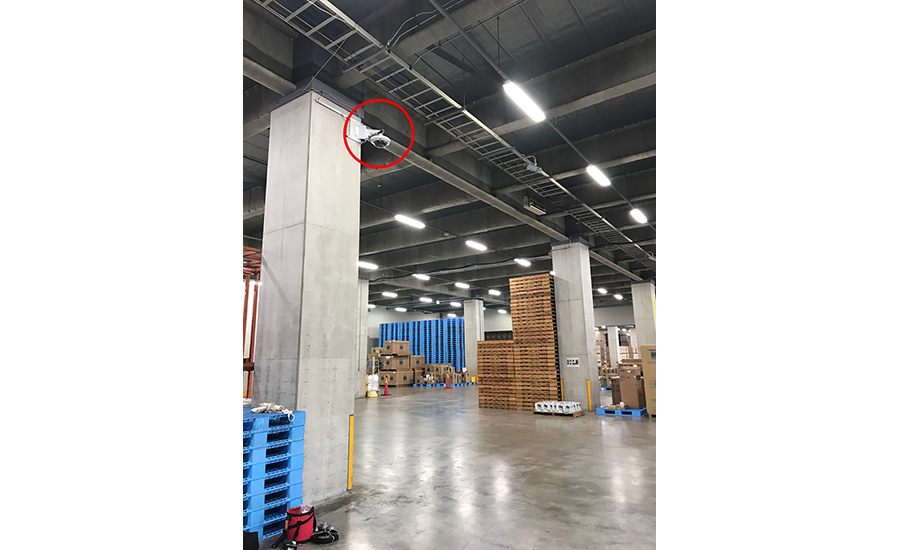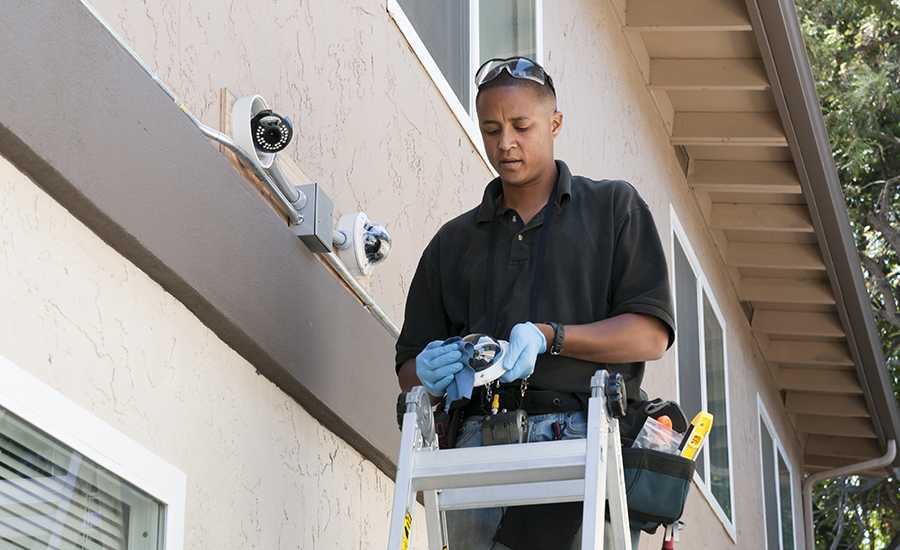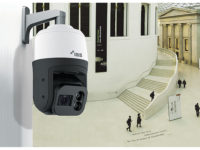Every time a manufacturer releases a video surveillance camera with higher megapixels than ever before, it makes headlines. Eight megapixels, 12 megapixels, 20 megapixels — the pixels keep getting higher and higher, but does this mean surveillance systems are getting better? Here we examine what lies ahead for sensor and compression technology and share advice from security providers on how to make smart choices about megapixel cameras.
Purpose-Built Cameras
Other than the number of pixels, the differences between megapixel cameras today and those from years past include edge computing, improved analytics and advanced compression (see sidebar). Enhanced low-light capabilities and higher frame rates further boost image quality, and today’s megapixel cameras are offered at a more cost-efficient price point as well.
“Five years ago, the main resolution was 1MP/720p, which was really leading edge at that time,” reflects Steve Burdet, manager, new systems and solutions at Axis Communications in Chelmsford, Mass. “Megapixel cameras used to perform poorly in low light, in compression, in frame rate and in wide dynamic range [WDR], but with advancements in processing and image sensors, these have become miniscule up to 6MP — and with a small gap in 4K and upwards, which continues to close. We are even able to produce multi-sensor, high-megapixel products with full frame rate, which would never have been possible five years ago.”
Security dealers and integrators appreciate the high-quality engineering and powerful features of present-day megapixel cameras. Matt Nelson, engineering program manager at Tempe, Ariz.-based Premise One calls them “purpose-built,” with AI and analytics among the drivers.
Other integrators express similar views. “AI technology has added new detection features to megapixel cameras that help limit false alarms,” says Fletcher Pinkham, president of Focus Tech in Santa Rosa, Calif.
“Edge analytics let the system access raw image data before it is compressed for transmission,” says Jim Cooper, vice president of technology at Integrated Security Communications in Millstone, N.J.
Michael Riotto, president of AVS Technology in Totowa, N.J., acknowledges the effectiveness of today’s 180-deg. to 360-deg. viewing for complex locations. “Megapixel cameras from five to 10 years ago typically only provided one view, so multiple cameras were required to cover a location,” he explains. “Additionally, higher resolution cameras now allow for a greater degree of placement flexibility overall, minimizing installation costs.”

i-PRO’s new multi-sensor AI camera supports three or four sensors with selectable resolutions from 4MP to 8.3MP per sensor. // IMAGE COURTESY OF I-PRO
Image Sensors Lead the Way
Leading the advancements of megapixel cameras are the image sensors, which have improved with every generation. This means less noise and higher performance in low light, allowing high megapixel cameras to truly be used anywhere, says Aaron Saks, Hanwha Techwin America’s senior technical marketing and training manager in Teaneck, N.J.
Jessica Liu-Edmonds, marketing manager at i-PRO Americas in Houston breaks it down, thusly: “Modern sensors contain more sensitive pixels, leading to higher-quality image information being captured for each pixel. Image signal processing has also evolved, with dramatic improvements in wide dynamic range.
“Cameras from the previous decade could easily wash out in bright lighting or lose definition in the shadows. Even in the most challenging lighting conditions, modern megapixel cameras deliver more crucial information for every pixel, which can be the difference between using video evidence to get a conviction or not.”
Bob Germain, director, hardware product management for Vicon Industries in Hauppauge, N.Y., concurs. “Sensors such as Sony Starvis are now being designed specifically for the surveillance camera market, with the pixel design being optimized to provide very low-light color or ‘starlight’ images. This provides additional forensic data, improving accurate identification of people or vehicles of interest.”
Paul Garms, director of regional marketing, video systems – North America for Bosch Security and Safety Systems in Fairport, N.Y., applauds advancements in high dynamic range (HDR) technology. “New motion-optimized HDR technology combines large pixel sensors, custom optics and imaging algorithms to capture the highest level of detail in challenging scenes, while also eliminating blur and artifacts caused by moving objects,” he says.
Garms continues, “This is accomplished by generating two readouts from one short exposure with different gain levels. The lens-sensor combination generates an HDR image without any HDR blur and artifacts. The result is an enhanced dynamic range that is motion-optimized.”
Liu-Edmonds speaks of additional sensor upgrades. “Digital noise reduction techniques have increased low-light performance substantially while preserving color information. Higher frame rates and shutter control results in smooth motion capture with less blur than previous generation sensors. And AI is being used to inform image processing about which objects in an image, such as faces, are important to capture with the highest clarity.”
Future of Sensor Technology
What lies in store for sensor technology? “The future of sensors will be a continuum of what we already see — better low-light performance, faster frame rate, improved noise reduction, etc.,” Burdet predicts. “While this may sound standard, it’s actually extremely complex, and remarkable, to keep making this sort of progress. Many new concepts are being explored to achieve these new levels of performance, like light transference and rendering.”
John Xiao, vice president of marketing at Hikvision USA in City of Industry, Calif., provides further insight. “Being able to zoom in on a relatively small dot within the whole image without pixilation and while maintaining image clarity is something we will see more of. As end users require clear color images at night, the size of security camera apertures and sensors are becoming larger to collect more light and produce a sharper, full color image 24/7,” he says.

Some megapixel cameras feature a pair sensors, one for IR imaging and another for visible light to reproduced full color. // LEEZSNOW/E+ VIA GETTY IMAGES
Xiao explains another trend is a single lens camera featuring two sensors. “One sensor is for IR imaging that ensures that video footage is bright and sharp, and the other is for visible light that allows video images to be reproduced in full and vivid color. Both sensor signals work together to create a single bright, full color image in light conditions as low as 0.0005 lux.”
Liu-Edmonds talks about the algorithmic benefits the industry can look forward to in megapixel cameras.
“As more AI-based deep learning algorithms are added into the signal processing chain, features such as object detection will further inform digital signal processing and shutter speeds, ensuring that an object of interest is captured at maximum resolution,” she explains. “Sensor technology is becoming increasingly smart in that edge-based algorithms can modify signal processing in real time to produce the best possible images based on current environmental conditions.”
For example, when objects speed up, sensors can adapt shutter speeds; pixels of interest will have less compression than static background pixels. “Beyond that the sky is the limit with stacked layers of pixels being controlled by embedded AI to combine pixel information into the ultimate high-resolution rendering of a scene,” Liu-Edmonds continues.
The megapixel cameras of today are providing greater advantages than the pricey, technologically limited cameras of yesterday, with more advancements already in the works, Burdet notes.
“These advancements are truly part of the secret sauce of what makes megapixel cameras so remarkable,” he continues. “The progression of more powerful compression technology and higher-performing image sensors will bring more meaningful video data into security applications.”



